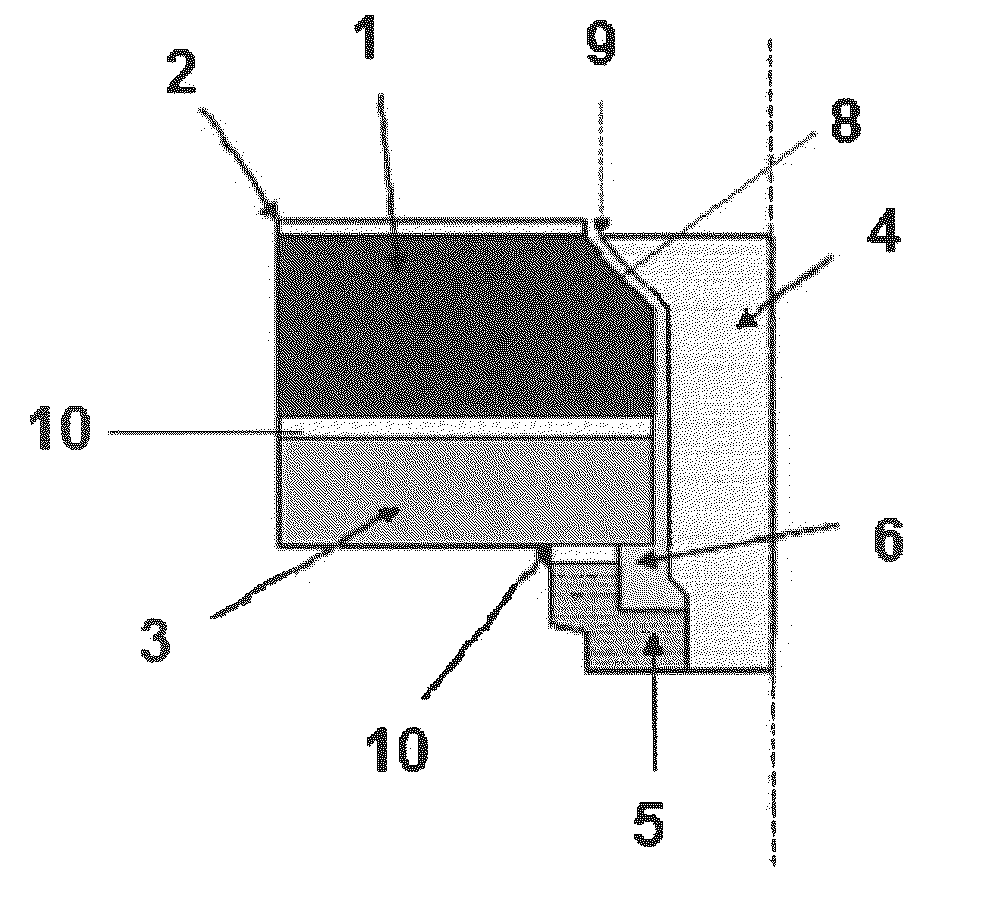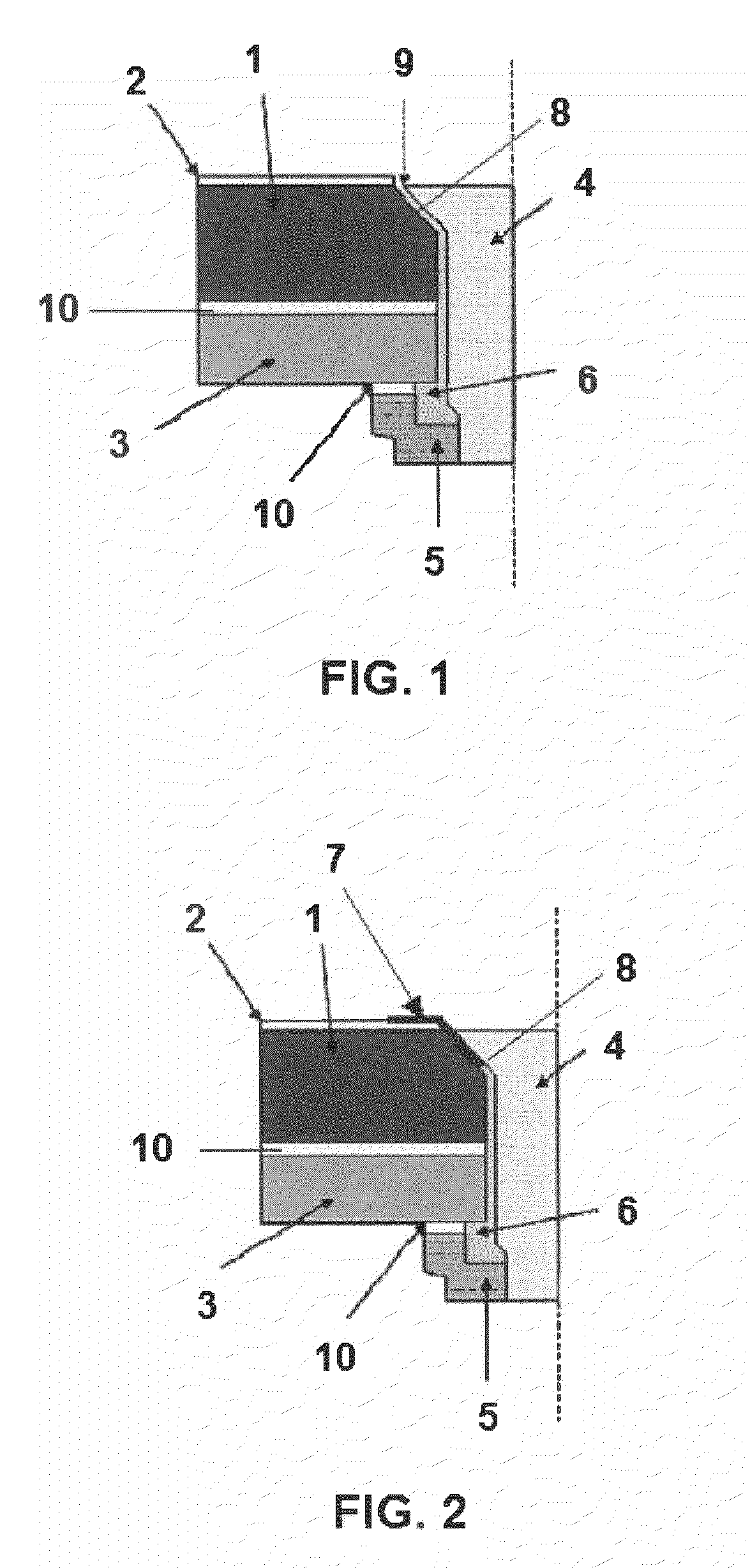Protection against direct lightning strikes in riveted areas of cfrp panels
a technology for aircraft panels and rivets, applied in aircraft static dischargers, lighting conductors, transportation and packaging, etc., can solve the problems of poor electrical continuity of composite materials, reduced efficiency of metalization solutions, and inability to ensure good electrical contact between the rivet head and the “metallization” layer, meshes or foils
- Summary
- Abstract
- Description
- Claims
- Application Information
AI Technical Summary
Benefits of technology
Problems solved by technology
Method used
Image
Examples
Embodiment Construction
[0018]Thus, the present invention relates to a metalization structure of the outer surface of structural panels 1 made in composite material comprising in turn a metal mesh or foil 2, said panels 1 being fixed to other structural elements 3, such as ribs, spars or stringers, by means of rivets 4, fixed by means of a binding nut 5 at the lower area of the structure. The metalization layer 7 of the invention ensures that electrical continuity exists between the head of the rivet 4, the countersinking area 8 and the metal mesh or foil 2 of the panel 1 or aeronautical structure. As observed in FIG. 2, the metallization layer 7 is confined to the upper part of the connection of the head of the rivet 4 with the metal mesh or foil 2 of the panel 1, whereas there may or may not be in the rest of the gap area between the rivet 4 and the aeronautical structure a sealing material layer 6 the main function of which is the tightness of the assembly.
[0019]Thus, FIG. 1 details the current configur...
PUM
| Property | Measurement | Unit |
|---|---|---|
| structure | aaaaa | aaaaa |
| area | aaaaa | aaaaa |
| thickness | aaaaa | aaaaa |
Abstract
Description
Claims
Application Information
 Login to View More
Login to View More - R&D
- Intellectual Property
- Life Sciences
- Materials
- Tech Scout
- Unparalleled Data Quality
- Higher Quality Content
- 60% Fewer Hallucinations
Browse by: Latest US Patents, China's latest patents, Technical Efficacy Thesaurus, Application Domain, Technology Topic, Popular Technical Reports.
© 2025 PatSnap. All rights reserved.Legal|Privacy policy|Modern Slavery Act Transparency Statement|Sitemap|About US| Contact US: help@patsnap.com


